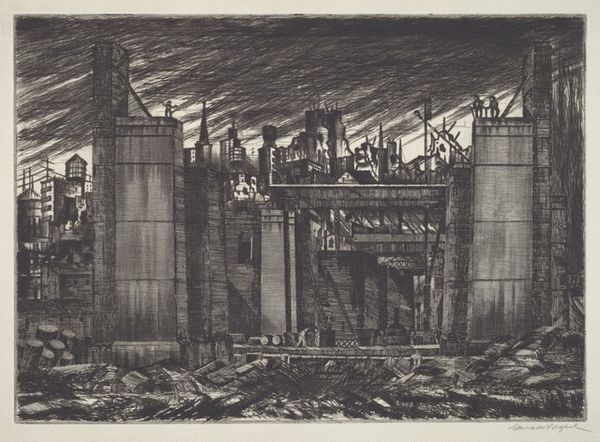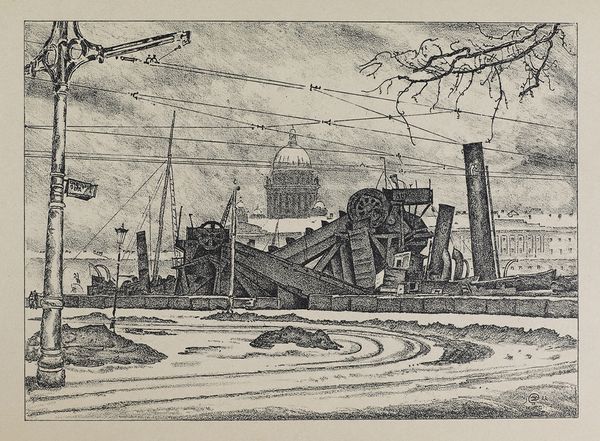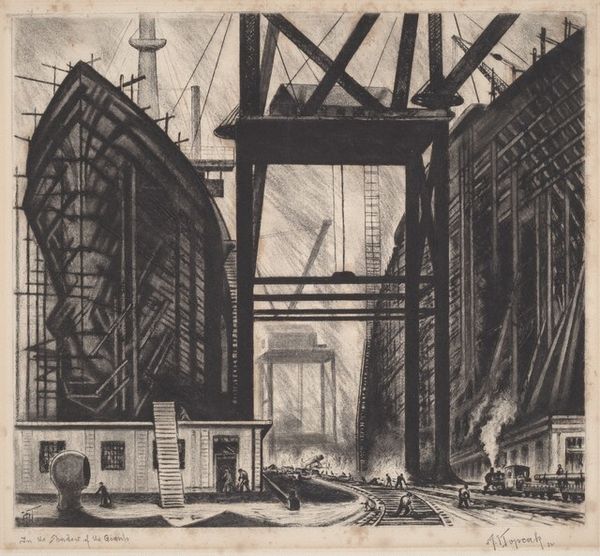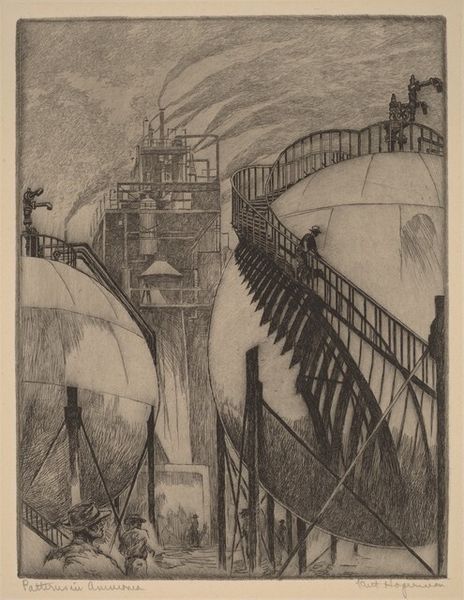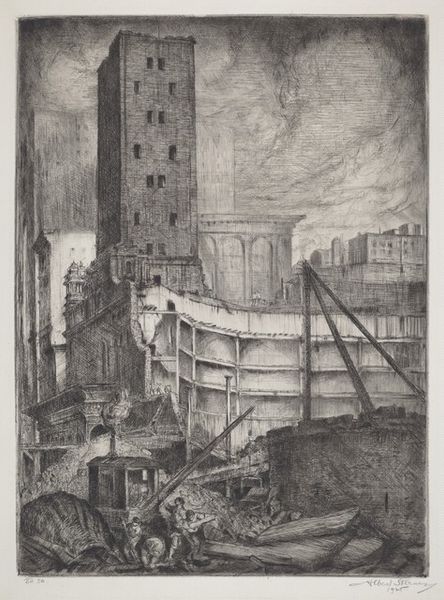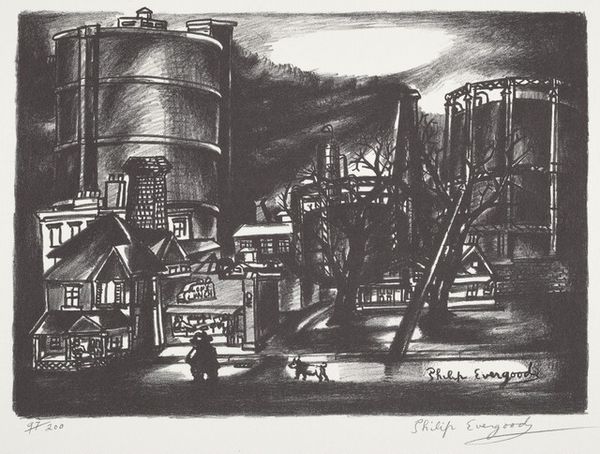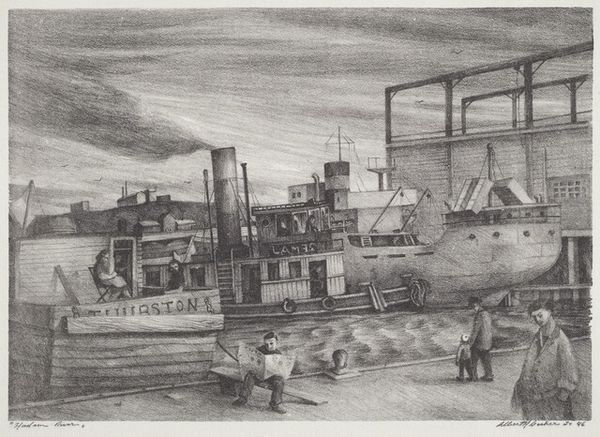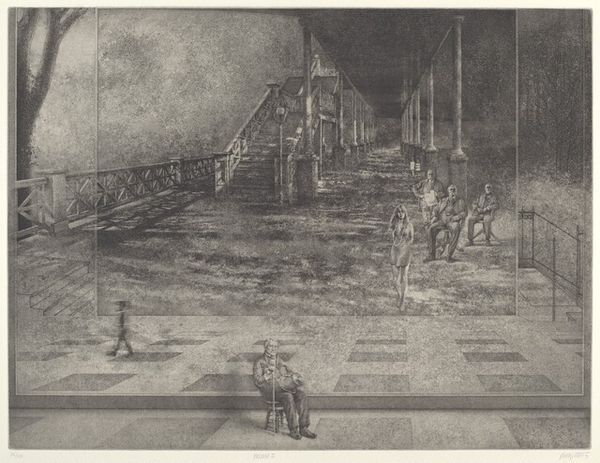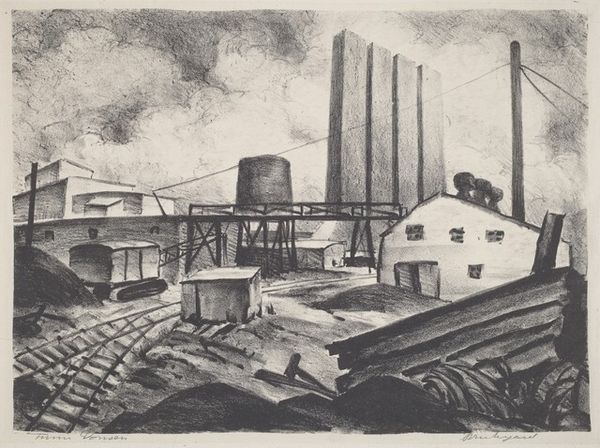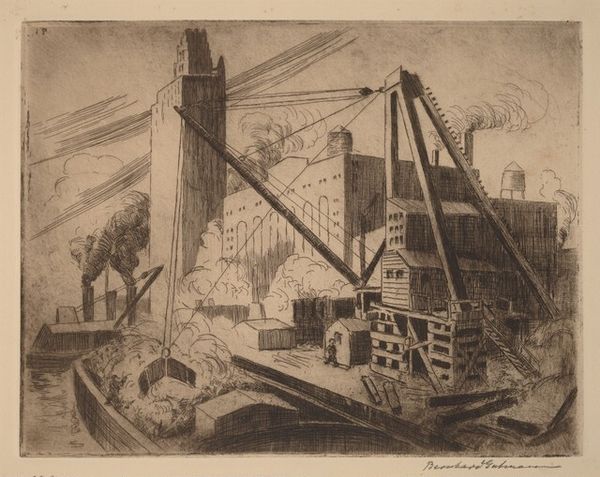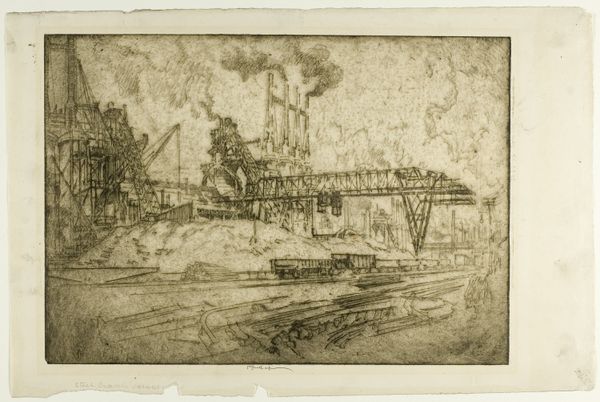
drawing, print, pencil, graphite
#
drawing
# print
#
pencil sketch
#
pencil
#
graphite
#
cityscape
#
regionalism
#
realism
Dimensions: image: 230 x 325 mm sheet: 285 x 414 mm
Copyright: National Gallery of Art: CC0 1.0
Curator: Here we have Sheffield Harold Kagy’s "Untitled (Bridges)," likely created between 1935 and 1943. It's rendered in graphite and pencil. A very detailed cityscape focused on, of course, bridges. What are your first thoughts? Editor: The mood, the light…it’s all very somber, almost industrial melancholy. So much intricate cross-hatching to define those girders. Feels like an elegy for a lost future, rendered with such exquisite care, it almost feels devotional. Curator: Kagy was part of the Federal Art Project during the Great Depression. These images served a crucial public role, celebrating American infrastructure and the working class at a time of immense economic hardship. There was this deliberate turn towards realism and regionalism, away from more avant-garde styles. Editor: You can feel that intention in every stroke. It's supposed to reassure, "Look what we’re building, look at the progress!" But, to me, there's a deep undercurrent of anxiety. Those skeletal bridges half-finished... a visual metaphor for unfulfilled promises. Curator: The bridges could also represent connection, resilience, a path forward despite adversity. Think of it in contrast to those Dust Bowl images, so prevalent at the same time. It shows industry instead of farmland. Editor: Right, I suppose I'm leaning towards my own emotional projection. That dramatic sky certainly contributes to the feeling of foreboding, but, sure, you are right. Those sturdy bridges probably resonated differently at the time—a monument to perseverance. It's just… that unfinished quality hits a nerve with me. As if he's aware how precarious those grand endeavors can be. Curator: The "unfinished quality", as you put it, could just be about a society’s capacity for innovation and constant renewal. You have offered a beautiful, personal reading to its symbolism—though probably not at the artist's hand. It’s precisely that tension between social messaging and individual reception that makes the artwork so enduring. Editor: Point taken! It's like a conversation between then and now, isn’t it? So what was supposed to symbolize resilience at the time still speaks to current challenges... interesting how history keeps rhyming in our heads.
Comments
No comments
Be the first to comment and join the conversation on the ultimate creative platform.
